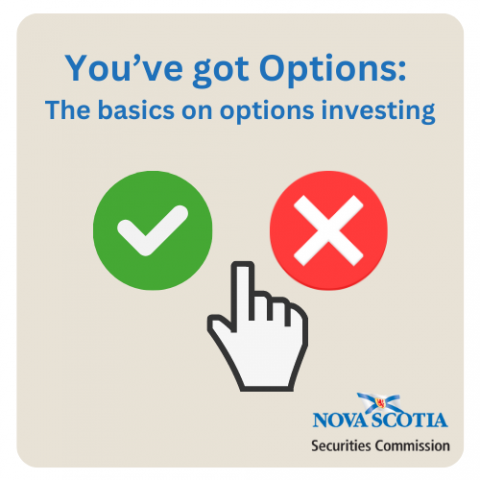Submitted by nsscadmin on

A few DIY investment platforms in Canada recently began offering options trading to customers. To make sure investors know what they’re getting into before investing in options here’s a quick rundown of how options investing works.
Options are a form of derivative. It is a contract sold by one party, known as the writer, to another party known as the holder. Under an option contract the holder has the right, but not the obligation to buy or sell a security or other underlying financial asset at a set price, known as the strike or exercise price, during a set period of time, known as the time to expiry.
It truly is an option as the holder has no obligation to buy or sell the security or underlying asset. To buy an option investment the holder must pay a premium whether they eventually decide to exercise the option or not.
Options are classified as either Call Options or Put Options.
A Call Option allows the contract holder to buy a security or asset at the exercise price. A Put option allows the holder to sell a security or asset at the exercise price. Both call and put options have specific time periods or time to expire. Both types of options are typically used by investors to manage risk or speculate.
Let’s look at an example of how a Call Option might work.
When an investor buys a call option, the holder is hoping the asset’s value will go up, which will allow them to purchase the asset at a discount. Let’s say an investor purchases a call option that allows them to purchase shares in Company X for $10 per share, the strike price, within the next two months. With the two-month deadline approaching, shares in Company X have risen to $15 per share. The investor has the option to purchase their shares at a discount (at the strike price) if they exercise their option.
However, what if shares in Company X did not rise but instead declined? What if nearing the end of the two-month deadline the share price in Company X had fallen to $5 per share. In this instance the holder would most likely not exercise their call option because they would be overpaying for the shares. If the option is held to for the two months and is not exercised, the option buyer will lose the original premium paid.
Now let’s look at an example of how a Put Option might work.
When an investor buys a put option they are hoping for the price of the asset to go down so they can sell the asset at a profit. Let’s say the holder owns shares in Company X and they bought an option to sell those shares for $10 per share in the next two months. A month into the two-month deadline, shares in Company X have fallen to $5 per share. The holder could exercise their option and sell their shares for a profit.
If the price of Company X’s stock were to rise above $10 the holder would most likely refuse to exercise the option as they could make more by selling the shares at the current higher price. Even if they do not exercise the option and sell the shares, they are still out the premium they paid for the option.
Please note that the Nova Scotia Securities Commission does not endorse or recommend options trading. We do not give investment advice and provide information so investors have as much knowledge as possible when making investment decisions. When investing always take into account the risk involved and your own risk tolerance and do not invest money you cannot afford to lose.
